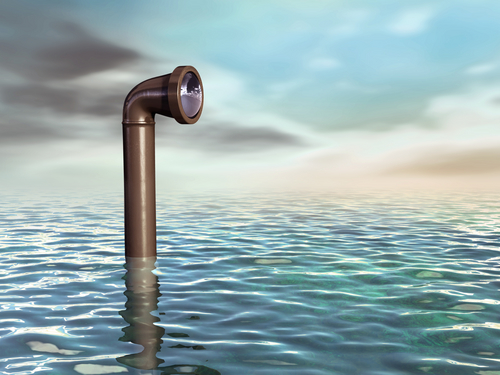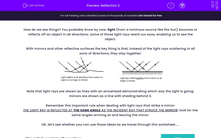How do we see things? Let's recap.
Light (from a luminous source like the Sun) bounces or reflects off an object in all directions. Some of those light rays reach our eyes, enabling us to see the object.
With mirrors and other reflective surfaces, the key thing is that, instead of the light rays scattering in all sorts of directions, they stay together:

Note that light rays are shown as lines with an arrowhead demonstrating which way the light is going. Mirrors are shown as a line with shading behind it.
The light (and line) coming from the light source, is called the incident ray and the light that bounces off is called the reflected ray.
Light that hits a mirror behaves a little bit differently to other surfaces.
When light hits a mirror the light ray is reflected at the same angle as the incident ray that struck the mirror - look for the same angles arriving at and leaving the mirror.
When we are looking at reflections and mirrors, make sure that you look for the same angles being shown.
Mirrors are used in all sorts of places to help humans see in ways they wouldn't normally be able to, just with their eyes.
Mirrors are used in cars to help drivers to see behind them. Curved mirrors are also placed on narrow roads or tight bends to help drivers see what vehicles might be coming round.

Mirrors are also used by dentists and surgeons to help them see hard to reach places and mirrors used to be used in periscopes in submarines, to help sailors see what is above the water's surface, from underneath the water!

Let's use all of this to help us today!







